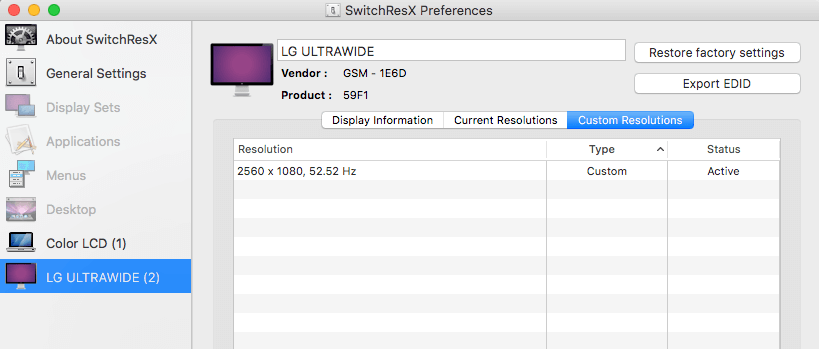

System/Library/Displays/Contents/Resources/Overrides. Note: For 10.11.0 and later, the location of the display overrides have changed. Note: I did not have to do the second one. Sudo defaults delete /Library/Preferences/ DisplayResolutionDisabled Sudo defaults write /Library/Preferences/ DisplayResolutionEnabled -bool YES There are some quirks, but it works.įirst step is you must enable HiDPI mode: Looking at that file and experimenting with it gave me the information needed to add your own custom resolutions to our own display plist. I did a little poking around, and in particular, I grabbed the display override plist for the built-in retina display. The other day, I borrowed a friend's MacBookPro11,2 with retina display. In addition, they have you extracting EDID and other unnecessary tasks. SwitchResX works great for selecting modes not available in SysPrefs->Displays, but not so good for adding custom resolutions. The problem is they rely on SwitchResX to add the resolutions which is fairly buggy and will not add all resolutions consistently.

I've tried a number of methods as documented in the following threads, but they've always come up short and don't really work. This post will use my Lenovo u430 as an example. The result is not retina clarity, but it isn't bad. Sometimes it would be great to use 1440x810 instead. Same thing goes for my Lenovo u430 with 1600x900 14" display. It would be great to use Apple's HiDPI tech to get better scaling. Unfortunately, if you use a normal scaled resolution at 1600x900 the text is not as crisp. But sometimes, it would be useful to work at 1600x900. Most of the time, I can work close enough to the display such that the text is not too small. Building a CustoMac Hackintosh: Buyer's Guide


 0 kommentar(er)
0 kommentar(er)
